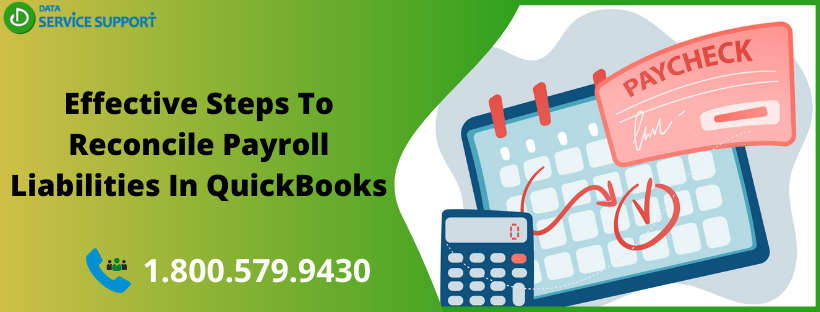In this post, we will discuss the handy steps to reconcile payroll liabilities in QuickBooks application. The payroll liabilities balance report accommodates the information about the payroll items assigned to a liability account, most company contributions, and deductions. Liabilities are the amounts that you owe, but haven’t paid to the concerned person. You may need to reconcile payroll liabilities in QuickBooks when the payroll liability reports show incorrect accounts. Read this post until the end to rectify the incorrect payroll liability report.
How do I reconcile payroll liabilities in QuickBooks? To get all the related queries resolved from a qualified QuickBooks expert, feel free to dial our helpline number 1.800.579.9430
What Does It Mean To Reconcile Payroll Liabilities In QuickBooks?
Payroll liabilities in QuickBooks can be categorized into two main categories: employer expenses and employee liability and these two main categories can be classified further into the sub-categories. Federal Income Tax, State Income Tax, Social Security Withholding, and Medicare Withholding. Some liabilities that need to get recorded in the liability accounts should not be entered into the expense account. The balances in these liabilities should be zero.
Error While Reconciling Payroll Liabilities In QuickBooks
When you try to reconcile payroll liabilities in QuickBooks application, you can get some technical issues due to the below-given reasons:
- Your bank account may look accurate, but actually, it is not.
- When the employees get paid more than the actual payroll amount.
- If you are using an outdated version of the QuickBooks application. (Update QuickBooks Now)
- Error messages such as “It appears you’re about to pay your Payroll abilities “ or “The File cannot be installed.”
How To Fix The Errors When Reconciling Payroll Liabilities In QuickBooks Application?
If you are getting an error while reconciling the payroll liabilities in QuickBooks, you can adjust the payroll liabilities by following the below-given methods:
Method 1:
- Launch QuickBooks application and then go to Employees tab.
- Now you need to click on Payroll Taxes and Liabilities then select Adjust Payroll Liabilities.
- Next, provide accurate information in the fields, including Employee adjustment, Company adjustment and the amount of your taxes.
- Proceeding further, choose the particular Employee and enter the correct information in the Taxes and liabilities fields.
- Choose a suitable Item Name and enter the adjustment amount.
- Now if you want to increase the amount, enter a positive number and enter a negative number to decrease the amount.
- To create a wage-based adjustment, you need to use Income Subject to Tax option.
- If you want to add a note for this adjustment, click on the Memo field and add the note.
- Hit Accounts affected option to get the task done.
- You will have to repeat the entire process for another employee
- Click OK to finish.
Alternatively, you can perform another method to reconcile payroll liabilities in QuickBooks as described below.
Method 2:
- In the first place, you need to check if the liabilities are paid or not.
- Next, proceed to Pay scheduled liabilities window.
- After that, choose the right item and hit the View/Pay button.
- Enter zero for the check amount and add additional lines in the expenses area.
- Wait until it offsets amounts to the liabilities accounts.
Need Further Assistance?
This post elaborates on how to reconcile payroll liabilities in QuickBooks Desktop. If you need any further assistance, give us a call on our helpline number 1.800.579.9430 and connect with one of our dedicated QB experts. Under our expert supervision, you can reconcile payroll liabilities in QuickBooks with absolute ease.
